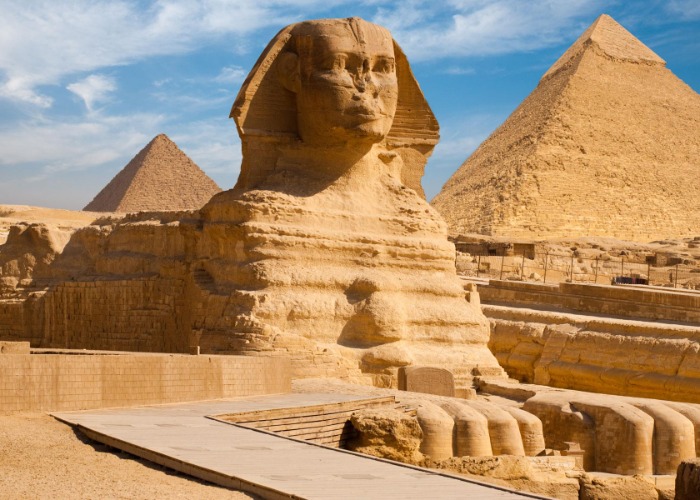The Enduring Majesty of Egyptian Architecture
1. Introduction: The Enduring Majesty of Egyptian Architecture
The architecture of ancient Egypt stands as a monumental testament to one of history’s most influential and enduring civilizations. For over three millennia, the Egyptians constructed awe-inspiring structures that reflected their complex religious beliefs, powerful pharaohs, and sophisticated understanding of mathematics and engineering. From the colossal pyramids that pierce the desert sky to the intricately decorated temples that lined the Nile River, Egyptian architecture continues to captivate and inspire, offering a profound glimpse into a world of grandeur, spirituality, and remarkable ingenuity. This article will explore the key characteristics, significant structures, materials, and the profound social and religious influences that shaped the distinctive architectural landscape of ancient Egypt.
Toc
2. Chronological Overview of Ancient Egyptian Architecture:

Egyptian architecture evolved over a vast span of time, with distinct styles and innovations emerging during different periods.
2.1. Early Dynastic Period (c. 3100-2686 BC)
The Early Dynastic Period saw the unification of Upper and Lower Egypt and the beginnings of monumental architecture. Tombs, known as mastabas, simple rectangular structures with flat roofs, became the standard burial place for royalty and high officials. These early structures laid the foundation for the more elaborate architectural forms that would follow.
2.2. Old Kingdom (c. 2686-2181 BC): The Age of Pyramids
The Old Kingdom is famously known as the “Age of Pyramids.” During this period, the pharaohs commissioned the construction of massive pyramid complexes as their royal tombs and symbols of their divine power. The Step Pyramid of Djoser at Saqqara, designed by the architect Imhotep, marked a revolutionary step in architectural design, leading to the development of the true pyramid form, exemplified by the iconic pyramids of Giza, including the Great Pyramid of Khufu, the largest stone structure ever built.
2.3. Middle Kingdom (c. 2055-1650 BC): Temples and Rock-Cut Tombs
Following a period of political instability, the Middle Kingdom saw a shift in architectural focus. While pyramid construction continued, it was on a smaller scale. Emphasis was placed on the construction of temples dedicated to various deities, often incorporating more elaborate decorations and complex layouts. Rock-cut tombs, carved into the cliffs of the Theban Necropolis, became increasingly popular for pharaohs and nobles.
2.4. New Kingdom (c. 1550-1070 BC): Monumental Temples and Royal Tombs in the Valley of the Kings

The New Kingdom represents the zenith of ancient Egyptian power and architectural achievement. This era witnessed the construction of some of Egypt’s most magnificent temples, including the vast Karnak Temple complex and the elegant Luxor Temple. Pharaohs were now buried in elaborate tombs in the Valley of the Kings, adorned with intricate paintings and filled with treasures intended for the afterlife. The colossal statues and imposing pylons characteristic of New Kingdom temples served to project the pharaoh’s power and divine connection.
2.5. Late Period (c. 712-332 BC) and Ptolemaic Period (332-30 BC)
The Late Period and the subsequent Ptolemaic Period, following the conquest of Egypt by Alexander the Great, saw the continuation of traditional Egyptian architectural styles, often with Greek influences. Large temple complexes, such as the Temple of Edfu and the Temple of Dendera, were constructed during this time, showcasing the enduring strength of Egyptian architectural traditions.
3. Key Characteristics of Ancient Egyptian Architecture:

Several distinctive features define ancient Egyptian architecture, reflecting the civilization’s unique beliefs and resources.
3.1. Monumental Scale and Grandeur
Egyptian architecture is characterized by its immense scale and grandeur. Structures were designed to be imposing and to last for eternity, reflecting the pharaohs’ divine status and the importance of the afterlife. Colossal statues, towering obelisks, and massive temple complexes were intended to inspire awe and convey the power of the state and its rulers.
3.2. Use of Stone as the Primary Building Material
Unlike many contemporary civilizations that relied on mud brick, the Egyptians primarily used stone for their monumental architecture. Abundant quarries along the Nile provided readily available limestone, sandstone, and granite, which were skillfully cut, transported, and assembled to create enduring structures.
3. https://nhagobinhthuoc.com/ky-quan-giua-dai-ngan-kham-pha-ngoi-nha-go-lim-lon-nhat-binh-phuoc/
4. https://nhagobinhthuoc.com/choang-ngop-truoc-ky-quan-nha-san-go-lim-lon-nhat-viet-nam/
5. https://nhagobinhthuoc.com/american-homes-a-guide-to-common-house-styles-across-the-united-states/
3.3. Post and Lintel Construction
The fundamental structural system employed in Egyptian architecture was the post and lintel. Massive rectangular columns (posts) supported horizontal beams (lintels) to create doorways, gateways, and roof structures. The sheer size of the stone blocks used in this construction is a testament to the Egyptians’ advanced engineering capabilities.
3.4. Hieroglyphic Inscriptions and Decorative Reliefs
Egyptian architecture was often adorned with intricate hieroglyphic inscriptions and decorative reliefs. These carvings served not only as ornamentation but also as a means of recording historical events, religious beliefs, and the deeds of the pharaohs. Temple walls and columns were often covered with these elaborate depictions, providing valuable insights into ancient Egyptian culture.
3.5. Axial Planning and Symmetry
Many Egyptian temples and complexes were designed with a strong sense of axial planning, featuring a main central axis that guided the layout of the structure. Symmetry was also a key characteristic, with elements often mirrored on either side of the central axis, creating a sense of balance and harmony.
3.6. Symbolic Orientation and Alignment
The orientation and alignment of Egyptian structures often held symbolic significance, particularly in relation to religious beliefs and astronomical observations. Temples were frequently aligned with the rising or setting of specific stars or with the course of the sun, reflecting the Egyptians’ deep connection to the cosmos.
4. Significant Architectural Structures:
The architectural landscape of ancient Egypt is dotted with remarkable structures that stand as enduring symbols of the civilization.
4.1. Pyramids:
The pyramids of Giza, particularly the Great Pyramid of Khufu, are perhaps the most iconic examples of Egyptian architecture. These colossal structures served as tombs for the pharaohs and were believed to facilitate their ascent to the afterlife. The Step Pyramid of Djoser, with its innovative stacked mastaba design, represents an important precursor to the true pyramid form.
4.2. Temples:
The Karnak Temple complex at Luxor is the largest religious structure ever built, encompassing numerous temples, chapels, pylons, and obelisks dedicated to various deities. Luxor Temple, also located in Thebes (modern Luxor), is another magnificent example of New Kingdom temple architecture, known for its elegant proportions and impressive colonnades. The rock-cut temples of Abu Simbel, with their colossal statues of Ramses II, are a testament to the pharaoh’s power and divine status.
4.3. Tombs:
The Valley of the Kings, located on the west bank of the Nile near Thebes, served as the burial place for the pharaohs of the New Kingdom. These rock-cut tombs, often elaborately decorated with scenes from Egyptian mythology, were intended to provide the pharaohs with everything they needed for a successful afterlife. Mastabas, the earlier form of royal tombs, are found in various necropolises across Egypt.
4.4. Domestic Architecture:
While the grandest architectural achievements were reserved for religious and funerary purposes, the remains of domestic architecture provide insights into the lives of ordinary Egyptians. Houses were typically constructed from mud brick, reflecting the availability of this material and the climate. Villages and towns often had a relatively simple layout, with houses clustered together.
5. Materials and Construction Techniques:

The construction of monumental Egyptian architecture required sophisticated knowledge of materials and advanced building techniques.
5.1. Types of Stone Used
Limestone, readily available in many parts of Egypt, was the most commonly used stone for pyramids and temples. Sandstone, often found in Upper Egypt, was favored for temples built during the New Kingdom. Granite, a harder and more durable stone, was frequently used for sarcophagi, obelisks, and facing stones.
5.2. Quarrying and Transportation of Stone
Quarrying stone was a labor-intensive process, often involving the use of copper tools and brute force. Once extracted, massive stone blocks were transported along the Nile River on barges to the construction sites.
1. https://nhagobinhthuoc.com/american-homes-a-guide-to-common-house-styles-across-the-united-states/
4. https://nhagobinhthuoc.com/japanese-house-architecture-a-harmony-of-nature-minimalism-and-tradition/
5.3. Construction Methods and Labor
The precise methods used to construct the pyramids and other large structures are still debated, but they likely involved a combination of ramps, levers, and skilled labor. A large workforce of skilled artisans, engineers, and laborers, organized into teams, was essential for these massive building projects.
6. Social and Religious Influences on Architecture:
Egyptian architecture was deeply intertwined with the social and religious beliefs of the civilization.
6.1. The Pharaoh’s Divine Authority
The pharaoh was considered a divine ruler, the intermediary between the gods and the people. The monumental scale of royal tombs and temples served to reinforce the pharaoh’s power and his connection to the divine realm.
6.2. Religious Beliefs and the Afterlife
The Egyptians had a complex system of religious beliefs centered on the afterlife. Tombs were designed to provide the deceased with everything they needed for their journey into the next world, while temples served as earthly homes for the gods and centers for religious rituals.
6.3. The Role of Priests and Scribes
Priests played a significant role in the design and orientation of temples, ensuring they were aligned with religious principles and astronomical observations. Scribes were responsible for recording measurements, plans, and inscriptions on the structures.
6.4. Social Hierarchy and Architectural Scale
The scale and grandeur of architectural projects reflected the hierarchical nature of Egyptian society. The most elaborate and monumental structures were reserved for the pharaoh and the elite, while the dwellings of ordinary people were far more modest.
7. Legacy and Influence of Egyptian Architecture:

The architectural achievements of ancient Egypt have left an enduring legacy that continues to influence art and architecture to this day.
7.1. Influence on Later Civilizations
Egyptian architectural elements, such as columns, obelisks, and the use of monumental scale, influenced later civilizations, including the Greeks and Romans.
7.2. Modern Interpretations and Inspirations
Modern architects and designers have often drawn inspiration from Egyptian forms and motifs, incorporating elements of its grandeur and symmetry into contemporary designs.
7.3. Preservation and Tourism
The well-preserved architectural sites of ancient Egypt continue to attract millions of tourists each year, serving as a vital part of Egypt’s cultural heritage and economy. Ongoing efforts are dedicated to the preservation and study of these remarkable structures.
8. Conclusion: A Timeless Testament to Human Ingenuity
The architecture of ancient Egypt stands as a timeless testament to human ingenuity, creativity, and the power of belief. From the colossal pyramids to the intricate temple complexes, these structures reflect a civilization deeply connected to its land, its rulers, and its gods. The enduring majesty of Egyptian architecture continues to inspire awe and wonder, offering a profound connection to a remarkable past and reminding us of the enduring legacy of one of history’s greatest civilizations.






